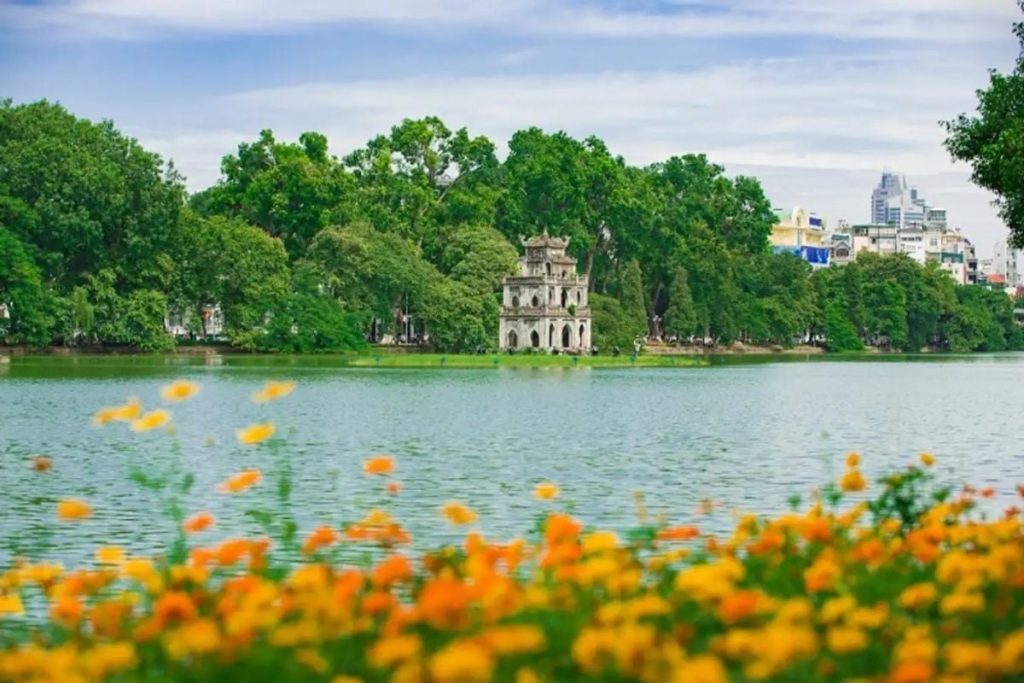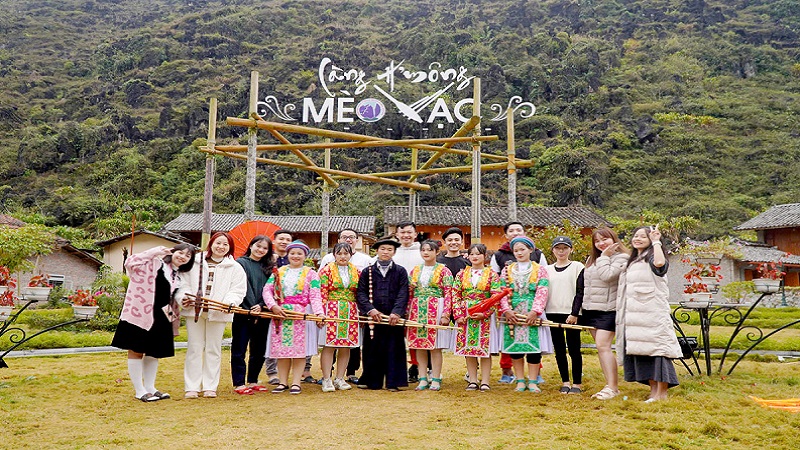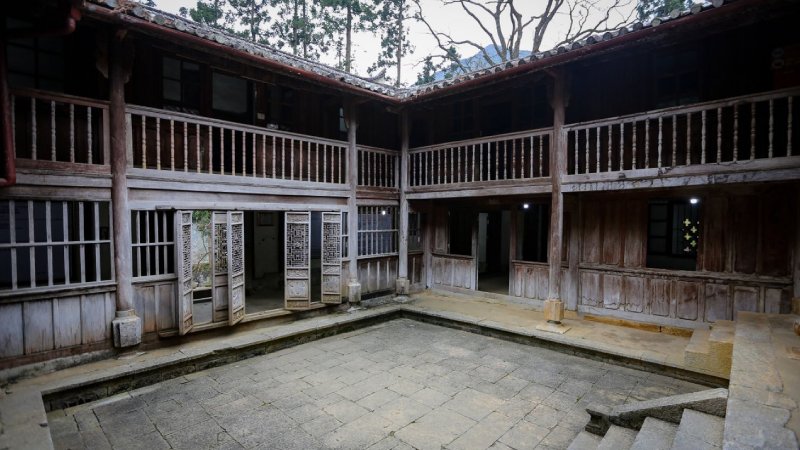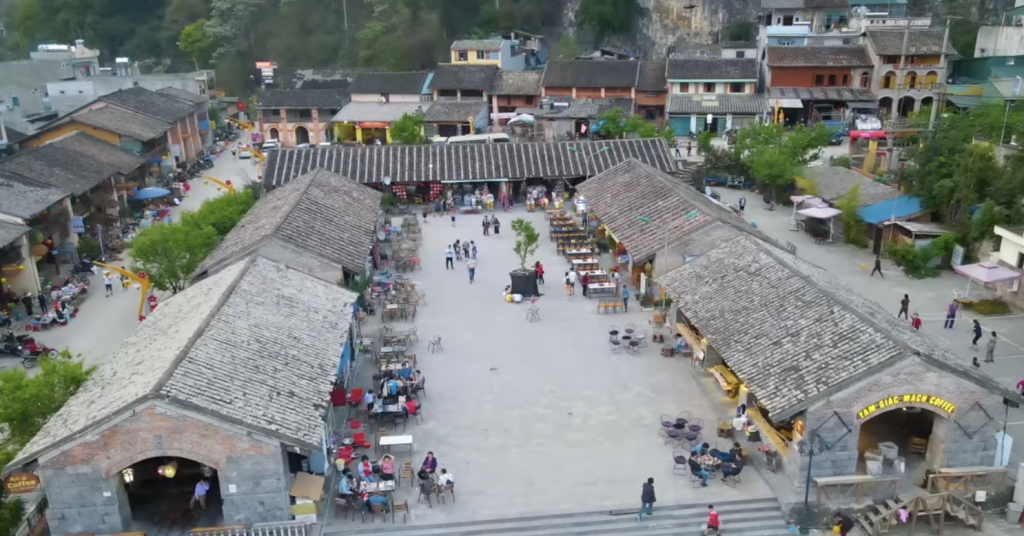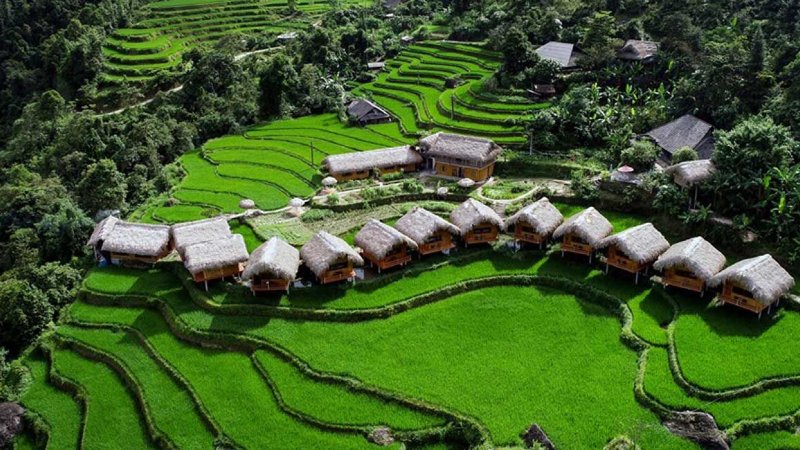Hanoi, the capital of Vietnam, is a city steeped in history and culture. While its bustling streets and vibrant atmosphere captivate visitors, just a short journey from the city lies a treasure trove of heritage waiting to be explored: the traditional craft villages around Hanoi. These villages are showcases of exquisite craftsmanship and reflect the rich cultural tapestry of Vietnam. From pottery to silk weaving, each village has its unique charm and history. In this blog post, we will take you on a journey through these remarkable villages, highlighting their significance, what you can do there, and tips for planning your visit.
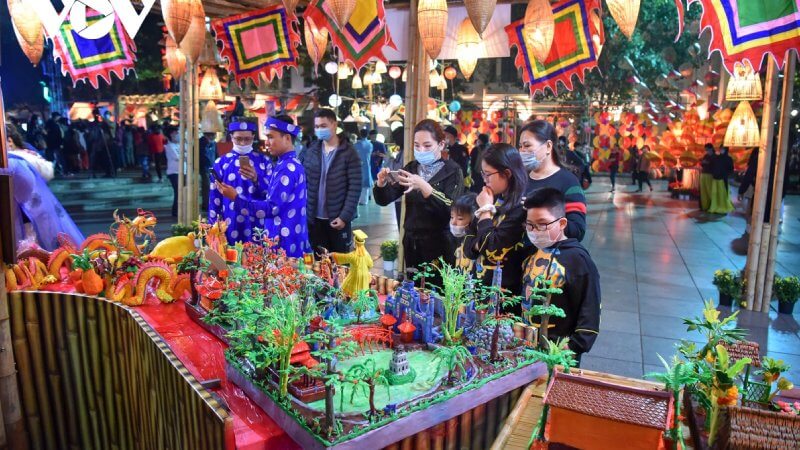
I. The significance of traditional craft villages
Cultural heritage and preservation
The traditional craft villages around Hanoi are vital to preserving Vietnam’s cultural identity. Many of these crafts date back centuries and are often passed down through generations. Artisans employ techniques that have been refined over time, contributing to the cultural richness of the region. By visiting these villages, tourists not only appreciate the art but also support the continuation of these traditional practices.
Economic Impact
These craft villages contribute significantly to the local economy. Many artisans rely on the income generated from selling their products, whether to tourists or through exports. This economic activity helps sustain local communities and encourages young people to learn these skills, ensuring that traditional craftsmanship endures.
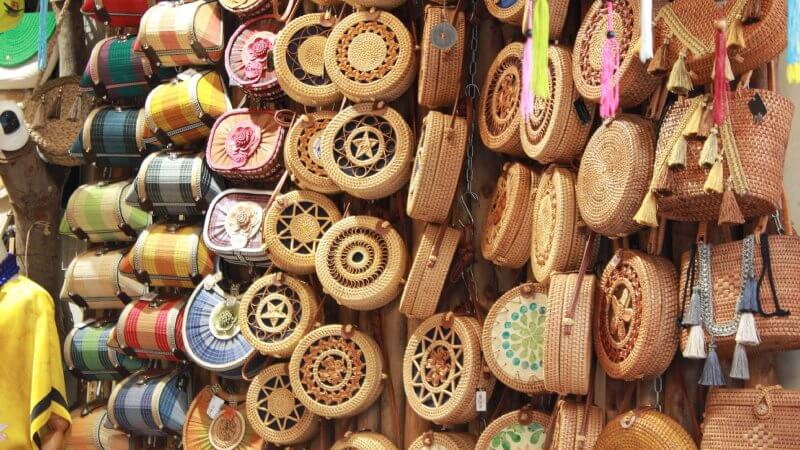
II. Notable craft villages around Hanoi
1. Bat Trang Pottery Village
Located approximately 13 kilometers from Hanoi, Bat Trang is one of the most renowned pottery villages in Vietnam. Established over 500 years ago, Bat Trang is famous for its high-quality ceramics, including vases, dishes, and decorative items.
What to Do:
- Pottery Workshops: Engage in hands-on experiences where you can mold your own pottery under the guidance of skilled artisans.
- Shopping: Explore numerous shops filled with beautiful ceramics, and take home unique souvenirs crafted by local artisans.
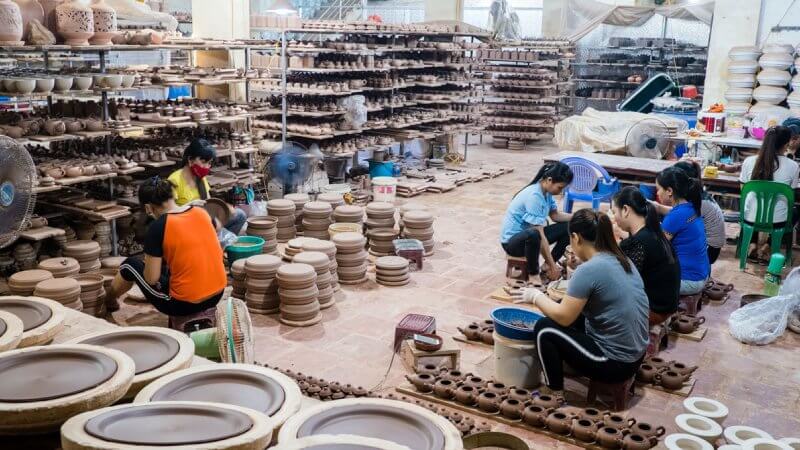
2. Van Phuc Silk Village
Just a short drive from Hanoi, Van Phuc is celebrated for its silk production. This village has been creating silk for over a thousand years and is known for its exquisite silk products, including traditional garments and modern fashion items.
What to Do:
- Silk Weaving Demonstrations: Witness the intricate process of silk weaving and understand the craftsmanship involved.
- Shopping: Purchase high-quality silk products directly from the artisans, ensuring authenticity.

3. Dong Ho Painting Village
Dong Ho, located about 30 kilometers from Hanoi, is famous for its traditional folk paintings. These paintings are known for their vibrant colors and unique themes, often depicting scenes from rural life and folklore.
What to Do:
- Painting Workshops: Participate in workshops to learn about the techniques used in creating these beautiful prints.
- Cultural Insights: Explore the history of Dong Ho paintings and their significance in Vietnamese culture.
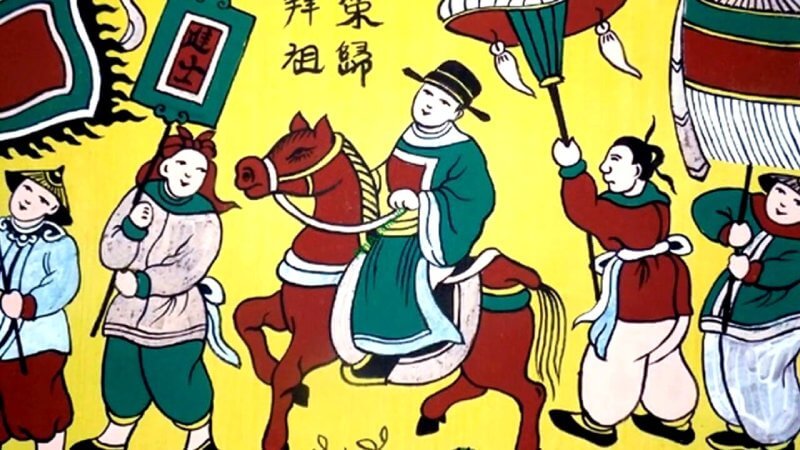
4. Chuong Conical Hat Village
Chuong Village, located about 30 kilometers from Hanoi, is renowned for its traditional conical hats, or “nón lá.” These hats are made from palm leaves and bamboo, and they are an iconic symbol of Vietnamese culture.
What to Do:
- Hat-Making Workshops: Join a workshop to learn how to craft your own conical hat, gaining insight into this traditional skill.
- Shopping: Purchase beautifully made conical hats directly from the artisans, perfect for souvenirs or gifts.
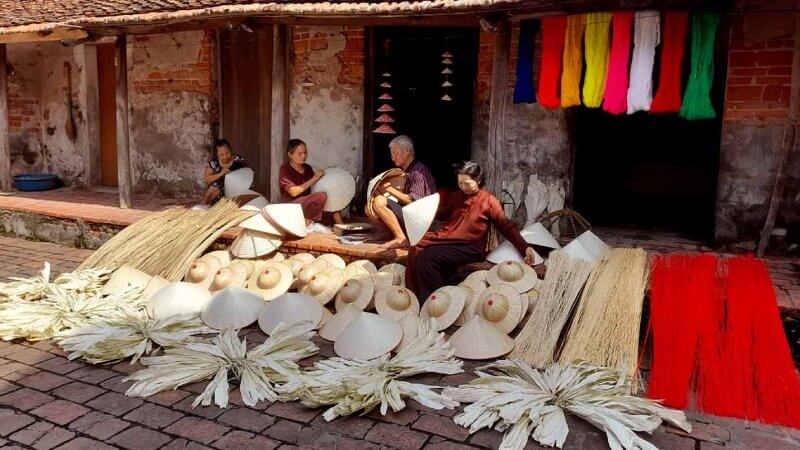
5. Quang Phu Cau Incense Village
Located around 50 kilometers from Hanoi, Quang Phu Cau is famous for producing incense sticks. The village has a long tradition of crafting incense, which plays an important role in Vietnamese spiritual practices.
What to Do:
- Incense-Making Tours: Take a tour to observe the intricate process of making incense sticks and learn about their cultural significance.
- Shopping: Purchase a variety of incense products to take home, offering a unique aromatic experience.
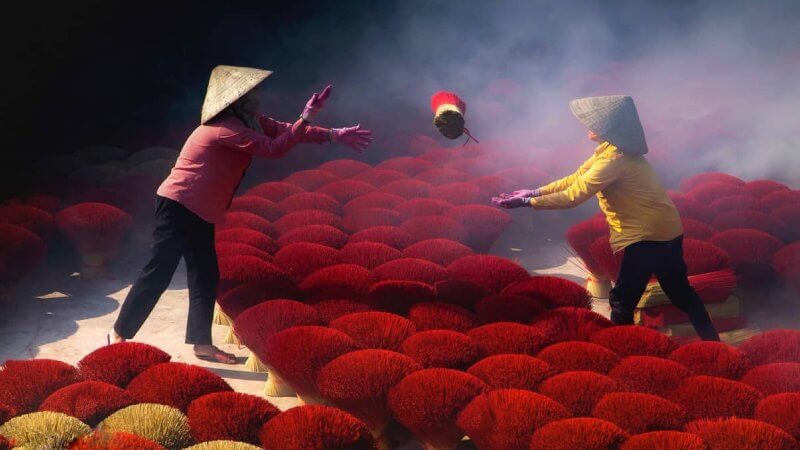
III. Experiencing the crafts firsthand
Workshops and classes
One of the best ways to connect with the traditional craft villages around Hanoi is through hands-on workshops. Many villages offer classes where visitors can learn from skilled artisans, providing an immersive experience that allows you to appreciate the craft on a deeper level. Whether it’s pottery, silk weaving, or hat making, these workshops are an excellent way to engage with the local culture.
Cultural festivals
Many craft villages host cultural festivals throughout the year, showcasing their crafts through exhibitions, performances, and competitions. Attending these festivals not only enhances your travel experience but also provides insight into the local culture and community spirit.
Local cuisine
In addition to crafts, many villages offer local cuisine that reflects the region’s culinary heritage. Visitors can enjoy traditional dishes and learn about the ingredients and cooking methods used in local recipes. Sampling local food is an integral part of the cultural experience when visiting the traditional craft villages around Hanoi.
IV. Best time to visit
The ideal time to explore the traditional craft villages around Hanoi is during the dry season, from November to April. The weather is generally pleasant, making it easier to travel and participate in outdoor activities. Avoiding the rainy season will enhance your overall experience.
V. Getting there
Most craft villages are easily accessible from Hanoi by public transportation, taxi, or guided tours. Research your options ahead of time to ensure a smooth journey. If you’re planning to visit multiple villages, consider hiring a private car or joining a tour for convenience.
Respecting local customs
When visiting craft villages, it’s important to respect local customs and traditions. Always ask for permission before taking photographs of artisans at work, and be mindful of their space. Engaging in conversations and showing interest in their craft can foster a positive connection with the community.
Dress appropriately
Dress modestly when visiting local villages, as many communities maintain traditional values. Comfortable footwear is also recommended, as you may be walking through rural areas and uneven terrain.
Conclusion
The traditional craft villages around Hanoi offer an enriching experience for travelers seeking to delve deeper into Vietnam’s cultural heritage. Each village presents a unique opportunity to witness craftsmanship firsthand, participate in workshops, and support local artisans. By visiting these villages, you contribute to the preservation of traditional skills and help sustain local economies.
From pottery and silk weaving to conical hats and incense crafting, the diversity of crafts found in these villages reflects the artistic spirit of Vietnam. So, if you find yourself in Hanoi, take the time to venture beyond the city’s bustling streets and explore the enchanting world of its traditional craft villages. You’ll leave with not only beautiful souvenirs but also lasting memories and a deeper appreciation for the artistry that defines this remarkable country.
By the way, a new beautiful place called Ha Giang loop which is very interesting, check this out: https://www.getyourguide.com/hanoi-l205/from-hanoi-3-day-ha-giang-loop-small-group-t739208
For Lan Ha Bay & Halong Bay trip – check this out: https://www.getyourguide.com/ha-long-l119790/from-ha-noi-2-day-lan-ha-ha-long-bay-5star-with-balcony-t739040/
Or https://www.tripadvisor.com/AttractionProductReview-g3737857-d28097153-Lan_Ha_Bay_Ha_Long_Bay_5_Stars_Private_balcony_2_days_trip-Tuan_Chau_Island_Halon.html

